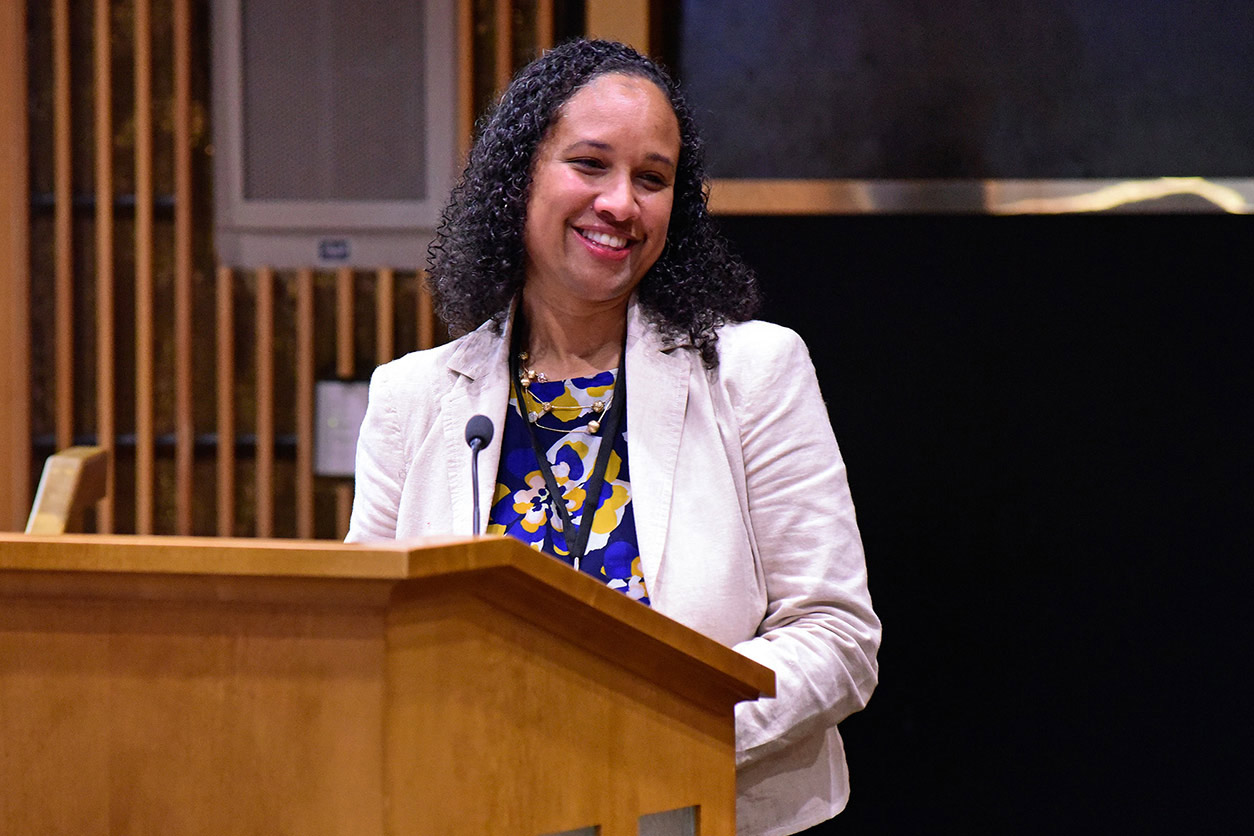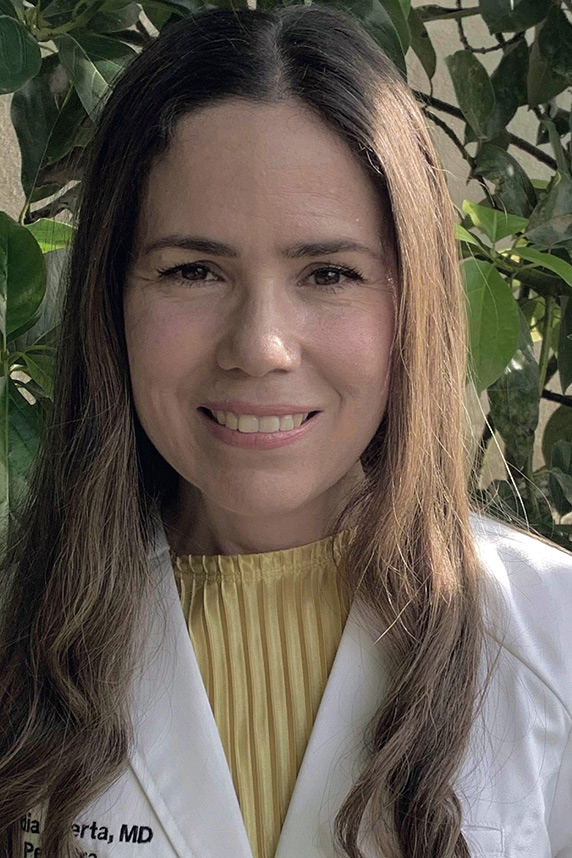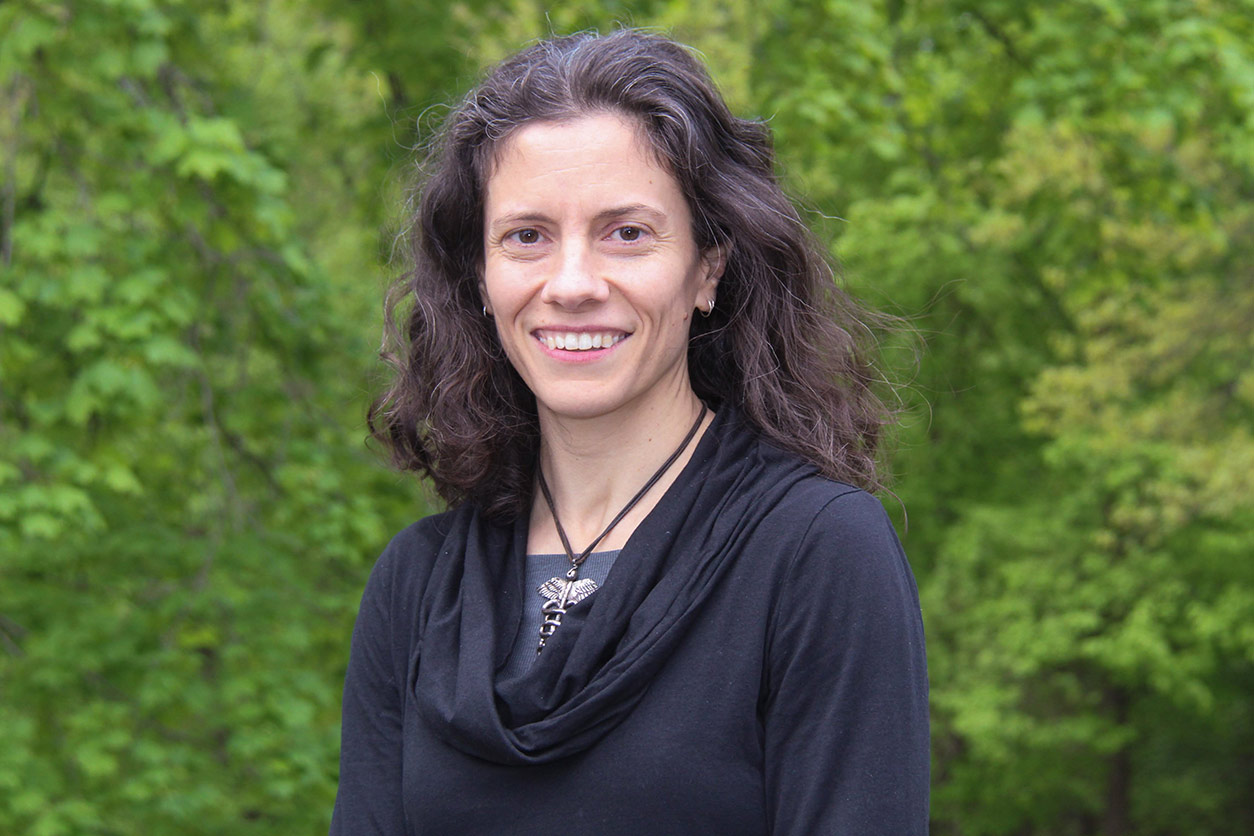The sixth webinar in the NIEHS Climate, Environment, and Health series observed Children’s Health Month with “Climate Change and Its Impacts on Children and Youth.” Nsedu Obot Witherspoon, executive director of the Children’s Environmental Health Network, moderated the seminar’s four talks.
 “Climate change places stress on the availability of food, clean air, clean water, and safe equitable housing,” said Witherspoon. (Photo courtesy of Steve McCaw)
“Climate change places stress on the availability of food, clean air, clean water, and safe equitable housing,” said Witherspoon. (Photo courtesy of Steve McCaw)“Nsedu is a leader in building bridges between science and advocacy for children's environmental health,” said NIEHS Senior Advisor for Public Health John Balbus, M.D. He organized the Oct. 21 event with Trisha Castranio, Global Environmental Health Program manager.
The disproportionate toll that extreme heat takes on poorer communities dominated the presentations. “Climate change is the largest threat to our children's health,” said Witherspoon. “It makes heat waves hotter and longer while decreasing air quality, which exacerbates asthma, allergies, food insecurity, and mental health challenges.”
 “Some 3.5 million Puerto Ricans suffered from a lack of medical care access after Hurricane Maria,” said Huerta-Montanez. “20,000 [are] still under blue tarps.” (Photo courtesy of Gredia Huerta-Montanez)
“Some 3.5 million Puerto Ricans suffered from a lack of medical care access after Hurricane Maria,” said Huerta-Montanez. “20,000 [are] still under blue tarps.” (Photo courtesy of Gredia Huerta-Montanez)Lessons from Puerto Rico
An estimated 90% of the excess heat caused by greenhouse emissions is trapped by ocean waters and results in stronger hurricanes, according to Gredia Huerta-Montanez, M.D., a pediatrician from Puerto Rico who is affiliated with the University of Georgia. She serves on the American Academy of Pediatrics executive committee, along with Balbus.
“Hurricane Maria in 2017 gave us a real-life lecture about climate change and human health,” Huerta-Montanez began. “Some 3.5 million Puerto Ricans suffered from lack of access to safe drinking water. Puerto Rican hospitals had no electricity, and doctors were performing surgery by cell phone light.”
Psychosocial and health needs make children particularly vulnerable to extreme weather, she said. “Repeated large disasters weaken resilience,” Huerta-Montanez explained. “They can lead to pathological changes and make children more susceptible to stress-related disorders.”
Educational consequences
Heat islands in poorer communities worsen health problems. “Studies also show hotter days broaden the racial gaps in academic testing scores, especially for black and Latino students, due to less access to air conditioning,” said Perry Sheffield, M.D., from the Icahn School of Medicine at Mount Sinai in New York.
 “Their larger body surface area in relation to their size make children more at risk for dehydration when they're exposed to heat,” said Sheffield. (Photo courtesy of Perry Sheffield)
“Their larger body surface area in relation to their size make children more at risk for dehydration when they're exposed to heat,” said Sheffield. (Photo courtesy of Perry Sheffield)“The heat effects from climate change are multiplied by the impermeable infrastructure, such as roads and parking lots, and also lack of tree cover,” she said. “Exposure to air pollution is also increased.”
The cycle of health disparities
 Rubin co-directs Emory University’s Southeast Pediatric Environmental Health Specialty Unit, where he focuses on environmental health disparities and promoting health equity for children. (Photo courtesy of I. Leslie Rubin)
Rubin co-directs Emory University’s Southeast Pediatric Environmental Health Specialty Unit, where he focuses on environmental health disparities and promoting health equity for children. (Photo courtesy of I. Leslie Rubin)“The rise in temperatures has corresponded with a rise in natural disasters,” said I. Leslie Rubin, M.D., from Emory University.
“Children account for 88% of yearly deaths attributed to climate change, with 99% of those living in underserved communities,” he explained. Some 16% of children live below the poverty level, and 90% of them are children of color, according to Rubin.
“The cycle of environmental health disparities is driven by poverty and racism,” he said. “The resulting stress has adverse health consequences on pregnancy, on physical health, and on mental health.”
Challenge to pediatricians
A high school senior from Indiana stole the show with her personal experience and reminders about what is at stake for the future. The climate activist co-founded Polluters Out, an international coalition mostly made up of young people.
She has asthma, which is worsened by emissions from a coal-fired power plant near her home. She challenged pediatricians to incorporate long-term health threats posed by climate change into their understanding of their Hippocratic Oath.
“The future of a whole generation looks almost apocalyptic,” the activist said. “I would like to see more pediatricians out on the streets with us, taking action beyond speaking on panels. The oath they took applies directly to their practice. Political inaction is a public health crisis on a global scale.”
Balbus acknowledged the complementary roles of research and personal stories. “Our speakers provided numbers to inform us, as well as stories that stir us.”
(John Yewell is a contract writer for the NIEHS Office of Communications and Public Liaison.)









